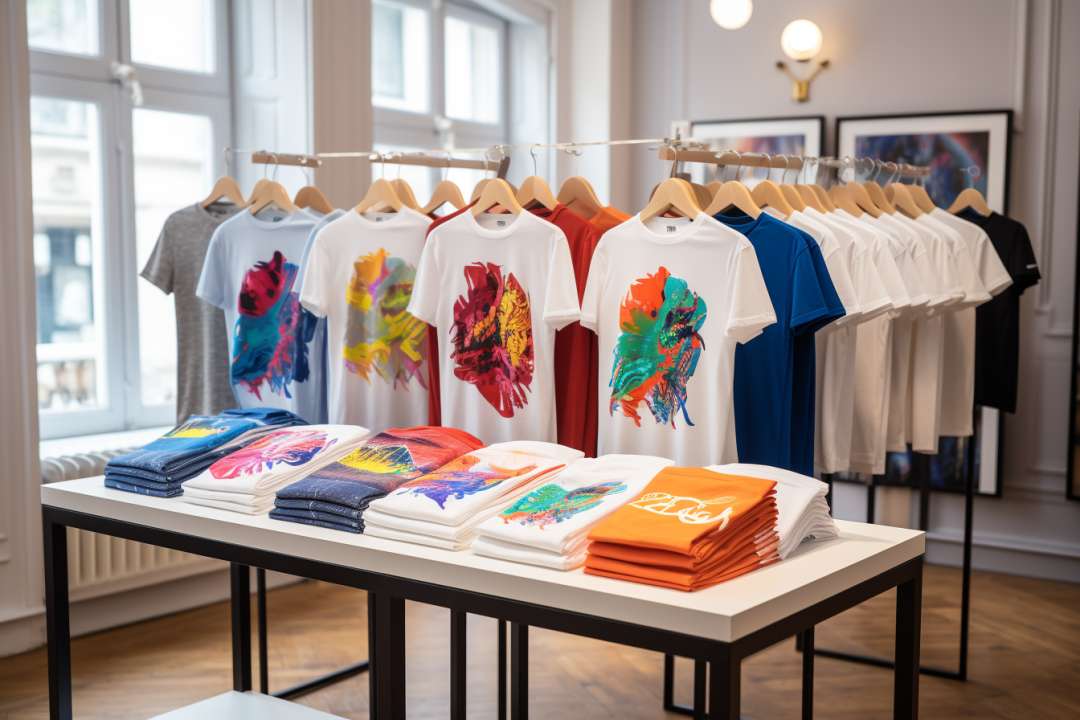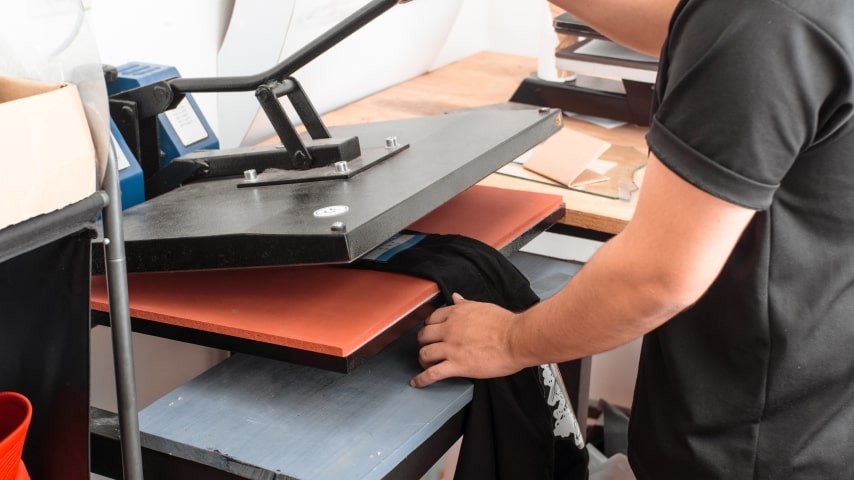A Comprehensive Overview to the Different Kinds Of Cloth Printing Methods
Each technique, from the careful workmanship of block printing to the quick efficiency of screen printing, offers one-of-a-kind functions and supplies distinct benefits. Digital printing's versatility and environmental awareness stand in plain comparison to the swift modification of warm transfer printing.
Block Printing
Block Printing, one of the oldest techniques of textile decor, has an abundant history that dates back to old human beings. The process involves sculpting complex designs right into wood blocks, which are then dipped in color and pressed onto fabric to develop patterns.
The precision and craftsmanship entailed in block printing make it a labor-intensive process, but it additionally enables a high level of modification. Artisans can develop special patterns by combining various blocks or varying the application of color. This versatility has actually added to the long-lasting popularity of block printing in both traditional and modern textile style.
Block printing is particularly valued for its visual qualities, consisting of the small variants in pattern and color that arise from the hand-printing process. These flaws lend an one-of-a-kind character per piece, differentiating it from mass-produced fabrics. In spite of advances in contemporary printing technologies, block printing continues to be a cherished method, commemorated for its historical value and artistic worth.
Display Printing
Screen printing, an additional popular fabric decoration method, has actually revolutionized the market with its effectiveness and versatility. This method includes developing a stencil, understood as a display, and utilizing it to use layers of ink on the printing surface. Each color in the style calls for a separate display, which enables complex and vivid multi-colored prints.

One of the essential advantages of screen printing is its versatility to different kinds of textiles, consisting of cotton, polyester, and blends. This strategy is specifically ideal for large-volume orders because of its cost-effectiveness and rate. The resilience of the prints is one more substantial advantage, as the ink bonds well with the textile, guaranteeing lasting styles that hold up against numerous cleans.
As soon as dried out, the design is transferred onto the emulsion-coated screen using a UV light source. Ink is after that pressed with the stencil onto the textile utilizing a squeegee.
Screen printing is widely made use of in the fashion business, promotional items, and personalized clothing. Its capacity for premium, comprehensive prints secures its standing as a foundation technique in fabric printing.
Digital Printing
Digital printing has promptly arised as an innovative technique in the textile industry, leveraging sophisticated innovation to produce high-resolution layouts directly onto textile. Unlike standard methods, electronic printing employs inkjet printers to down payment pigment or dye-based inks onto web link textiles, making it possible for elaborate and vibrant patterns with an impressive degree of information and color precision.
Among the main benefits of digital printing is its versatility. This method enables on-demand printing, which considerably minimizes waste and minimizes stock prices. Furthermore, it sustains brief runs and customized layouts, making it perfect for limited-edition collections and bespoke jobs. The removal of screens and other arrangement requirements even more boosts efficiency, decreasing manufacturing time and labor prices.
Additionally, electronic printing is eco-friendly. screen printing. It makes use of water-based inks and requires less water and power contrasted to conventional strategies, straightening with lasting practices. The precision of digital printing likewise permits using a bigger range of fabrics, including cotton, silk, polyester, and blends, guaranteeing adaptability throughout numerous applications
Heat Transfer Printing
How does warm transfer printing transform textile style? Warmth transfer printing includes using warmth and pressure to move a style from a particularly developed paper onto fabric.
Among the key advantages of heat transfer printing is its capability to produce high-grade, in-depth images swiftly and efficiently. It is specifically well-suited for little manufacturing runs and customized orders, making it a popular selection for individualized apparel and advertising products. Additionally, this strategy is functional, suiting various types of materials including cotton, polyester, and blends.
Additionally, heat transfer printing is reasonably economical compared to other methods, as it requires marginal configuration and reduced preliminary investment - heat transfer vinyl printing. This cost, paired with its capacity for generating dynamic, durable prints, emphasizes its critical role in contemporary material layout

Dye Sublimation Printing
Dye sublimation printing, an advanced material printing technique, offers unequaled vibrancy and longevity for layouts on various synthetic fabrics. This method includes converting solid color right into a gas without travelling through a fluid state, allowing the dye to penetrate the material effortlessly. The procedure begins with printing the style onto an unique transfer paper utilizing sublimation inks. The published transfer paper is after that put on the material, and both go through high warmth and stress using a warm press. The warmth causes the color to sublimate and bond with the fabric fibers, creating an irreversible, high-resolution print that stands up to fading and splitting.
Among the essential benefits of dye sublimation printing is its ability to produce continuous-tone prints with detailed details and vivid shades. Unlike other printing techniques, the color ends up being component of the fabric as opposed to resting on top of it, leading to a breathable and soft finish. This technique is particularly efficient on polyester and various other synthetic materials, making it a prominent option for sportswear, banners, and home textiles. that site In addition, color sublimation is ecologically pleasant, as it requires no water and creates see this here minimal waste, aligning with lasting manufacturing methods.
Final Thought
Block printing is admired for its artisanal top quality, while display printing is helpful for high-volume production. Digital printing offers adaptability and ecological advantages, whereas heat transfer printing is suitable for quick customization.
Each approach, from the precise craftsmanship of block printing to the fast effectiveness of screen printing, offers unique purposes and provides unique benefits. Digital printing's adaptability and ecological awareness stand in stark contrast to the quick customization of heat transfer printing. Despite breakthroughs in contemporary printing innovations, block printing remains a treasured strategy, commemorated for its historical relevance and artistic worth.
Dye sublimation printing, an innovative material printing technique, supplies unmatched vibrancy and long life for styles on different artificial fabrics. Digital printing gives adaptability and environmental advantages, whereas warm transfer printing is optimal for fast personalization.